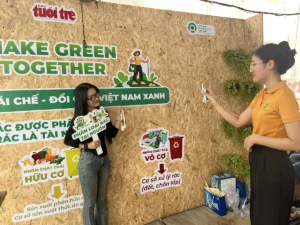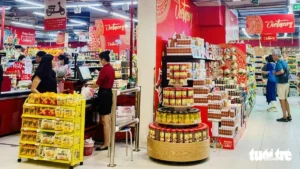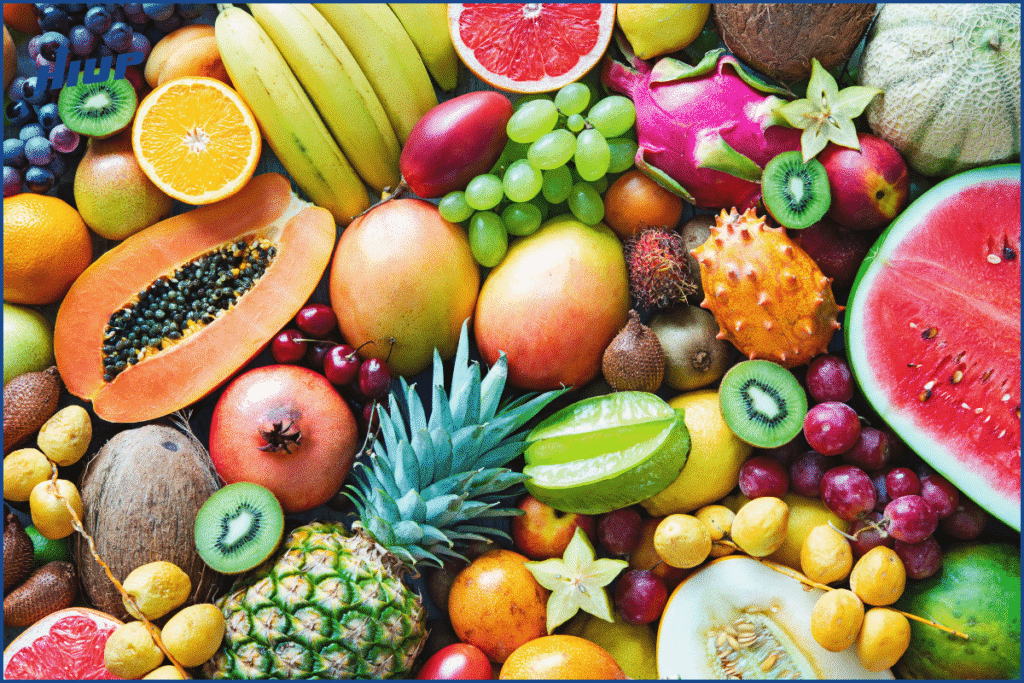Fruit and vegetable exports – a picture with many dark spots in the first months of the year shows that our country needs to quickly remove bottlenecks and find new directions for this industry.
Fruit and vegetable exports decline sharply
According to data from the Customs Department, Vietnam’s fruit and vegetable exports in April 2025 reached only over 520 million USD, down 13% compared to April 2024. In the first 4 months of the year, fruit and vegetable exports only earned over 1.6 billion USD, down 10.5% compared to the same period last year.
Notably, although China is still the largest market for Vietnamese fruits and vegetables, accounting for nearly 46% of total export value, in the past 4 months it only reached over 777 million USD, down nearly 33% compared to the same period last year.
Sharing about this market, Mr. Dang Phuc Nguyen, General Secretary of the Vietnam Fruit and Vegetable Association, is worried that durian – a fruit once considered a “star” in fruit and vegetable exports – is currently facing great difficulties in China, and the export results of the entire fruit and vegetable industry are declining. Durian exports have decreased by 74% compared to the same period last year, with the export value of durian in the first 4 months of 2025 reaching only 130 million USD, much lower than the 500 million USD in the same period in 2024.
Explaining the agency’s reasons, Mr. Nguyen said that since the beginning of the year, China has increased its control over the quality of imported durian. Tightened standards on quarantine, cadmium residue, yellow O and traceability have caused many substandard shipments to be returned, creating a break in the consumption chain. This also shows that dependence on certain products is becoming a weakness of the Vietnamese fruit and vegetable industry.
It can be seen that, although present in more than 80 countries and territories, Vietnamese fruits and vegetables are facing increasingly strict technical barriers regarding pesticide residues, plant quarantine and requirements on labor and environmental standards, while the capacity to comply with standards of the entire production sector is still limited.

Take the pulse, find the bottleneck
According to economic experts, the decline in fruit and vegetable exports is not only due to market factors but also to bottlenecks in production and quality control. Talking about this story, economic expert Nguyen Minh Phong assessed that the quality standards of agricultural products in general in our country are not uniform. In fact, not many businesses focus on investing in product quality control systems. Meanwhile, markets such as the EU, the US, Japan, and China are increasingly tightening regulations on food hygiene and safety. GlobalGAP, HACCP standards and organic certification requirements are becoming barriers to Vietnamese exports.
In addition, Vietnamese enterprises lack investment in processing and preservation technology, and most Vietnamese agricultural products are still exported in fresh form, making them less competitive and vulnerable to market fluctuations. While other major agricultural exporting countries such as Thailand, the Philippines, and India have shifted strongly to deeply processed products, Vietnam has not yet invested adequately in this technology.
In addition, according to Mr. Nguyen, the bottleneck lies in the failure to overcome technical barriers and origin control. Many countries have applied strict control measures to avoid origin fraud and goods transfer, while many Vietnamese enterprises have not yet built a clear traceability process and ensured transparency in the production and export process.
Standardize quality to maintain growth momentum of fruits and vegetables
In the context of fruit and vegetable exports facing many challenges from technical barriers and quality standards of the international market, standardizing quality criteria is not only a mandatory requirement but also a key strategy to maintain the growth momentum of agricultural exports in general and the fruit and vegetable industry in particular. “Standardizing quality criteria is considered a strategic solution to unblock export flows and increase the added value of exported fruits and vegetables,” affirmed the General Secretary of the Vietnam Fruit and Vegetable Association.
Accordingly, Vietnamese enterprises need to apply international standards such as GlobalGAP, HACCP, ISO 22000. These are not only passports for Vietnamese goods to enter large markets but also tools to enhance the reputation and value of products. In addition, investing in post-harvest preservation technology and deep processing not only helps prolong product preservation time but also creates new product lines, increasing export value. Products such as dried fruits, fruit juices, frozen products have proven to be strongly attractive in the international market – “This is a new direction that promises to bring new and sustainable values to the Vietnamese fruit and vegetable industry”, Mr. Phong emphasized.
However, according to Mr. Phong, to achieve sustainability from the “root”, the most important thing is to strengthen control of origin and quality. Especially in the context of increasing origin fraud, building a traceability system is an urgent requirement. Enterprises need to apply blockchain technology and QR codes to control the production process from farm to table, ensuring transparency and increasing consumer trust.
Recently, the Ministry of Agriculture and Environment signed 4 protocols with the General Administration of Customs of China, including 2 protocols on the export of chili and passion fruit – continuing to open up great opportunities for Vietnamese fruit and vegetable export enterprises. However, it also poses the challenge of having to comply with strict quarantine standards to successfully export to this increasingly demanding market.
On the association side, Mr. Nguyen also suggested that the Government continue to implement programs to support businesses investing in deep processing technology and preserving agricultural products. At the same time, training courses on applying international standards will also be organized to improve the capacity of small and medium enterprises – support policies and investment trends in deep processing technology will open up great opportunities for Vietnamese businesses./.
















